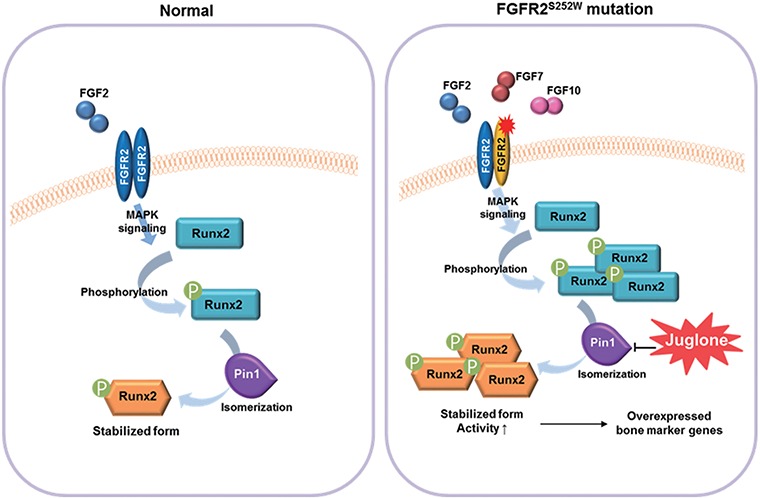Figure 6.

Mechanisms underlying restoration of the normal phenotype by juglone in calvaria with gain-of-function mutations in FGFR2. Juglone treatment lowers abnormally elevated RUNX2 levels in Fgfr2S252W/+ mice by inhibiting RUNX2 isomerization, thereby restoring proper downstream transcriptional activity (9,83). The S252W mutation of FGFR2 increases ligand affinity and alters ligand specificity, resulting in hyperactive FGF signaling. In this genetic background, RUNX2, one of the targets of FGF signaling, undergoes excessive PTM, such as isomerization and acetylation. Repression of RUNX2 isomerization by juglone, a PIN1 inhibitor, decreases the RUNX2 level and normalizes the expression of RUNX2 target genes, thereby rescuing the abnormal calvaria phenotypes of Fgfr2S252W/+ mice.
